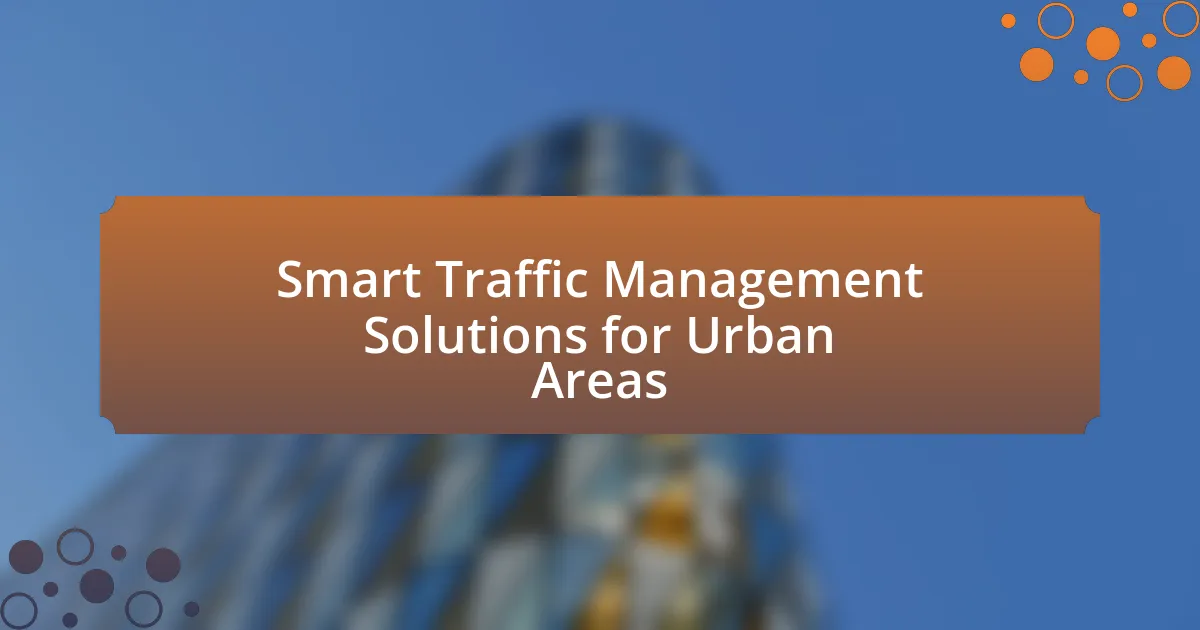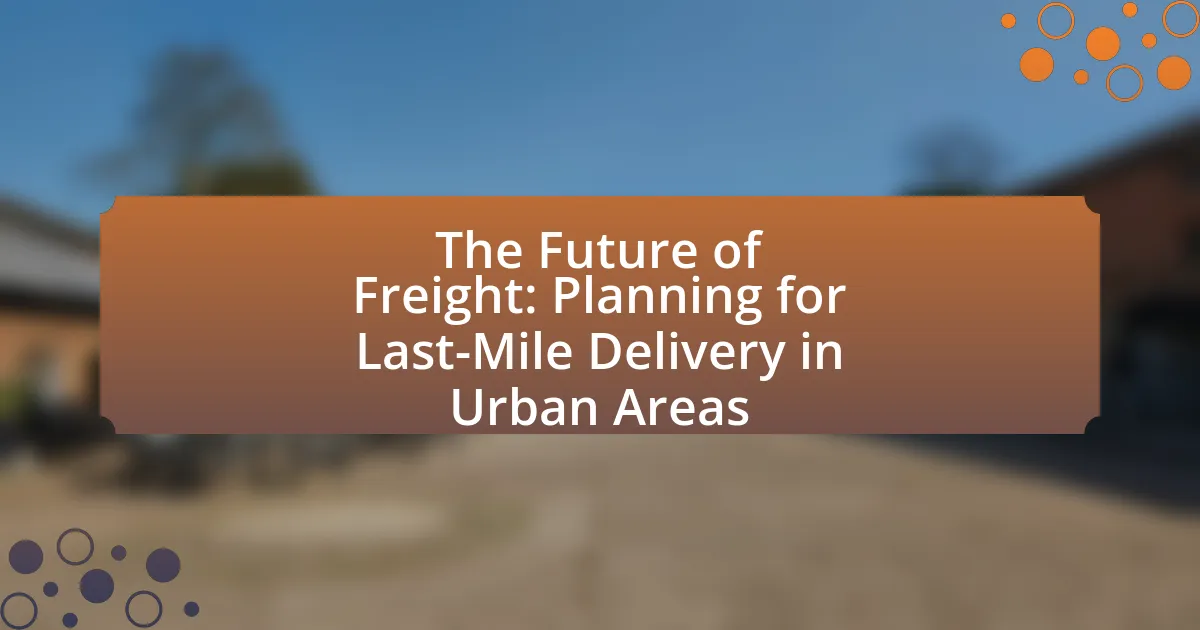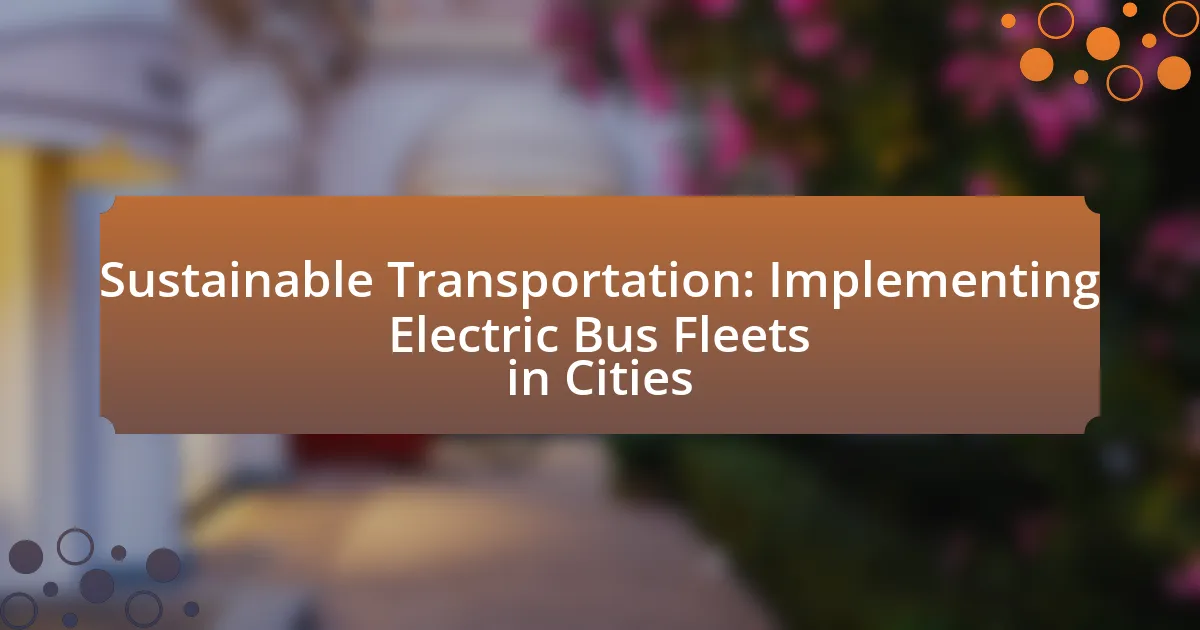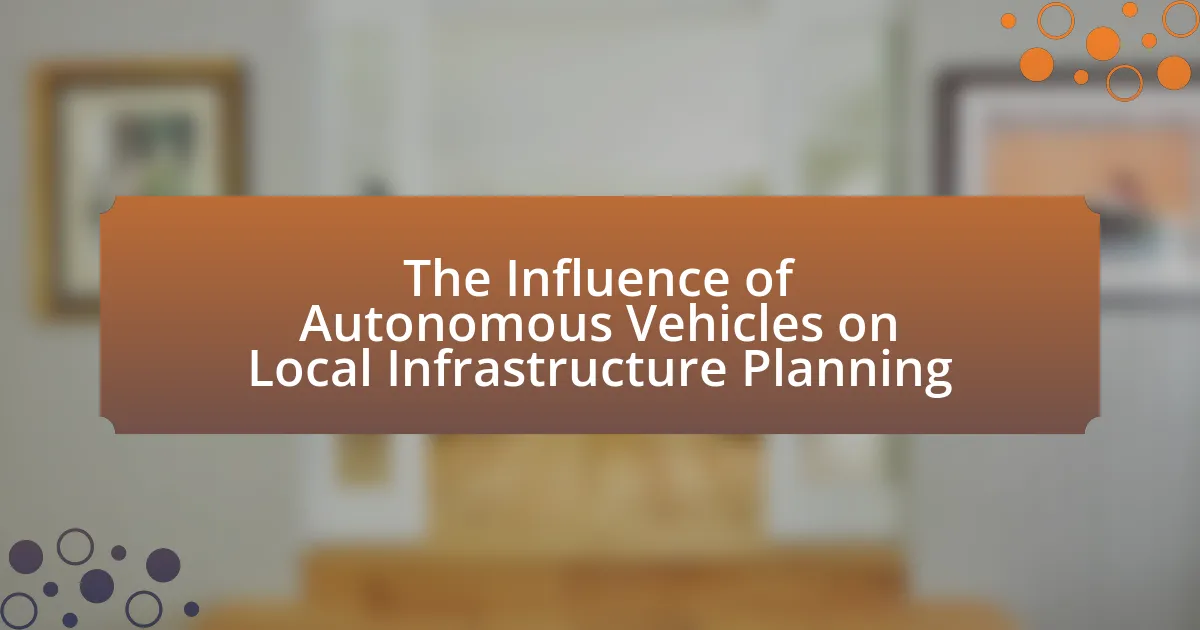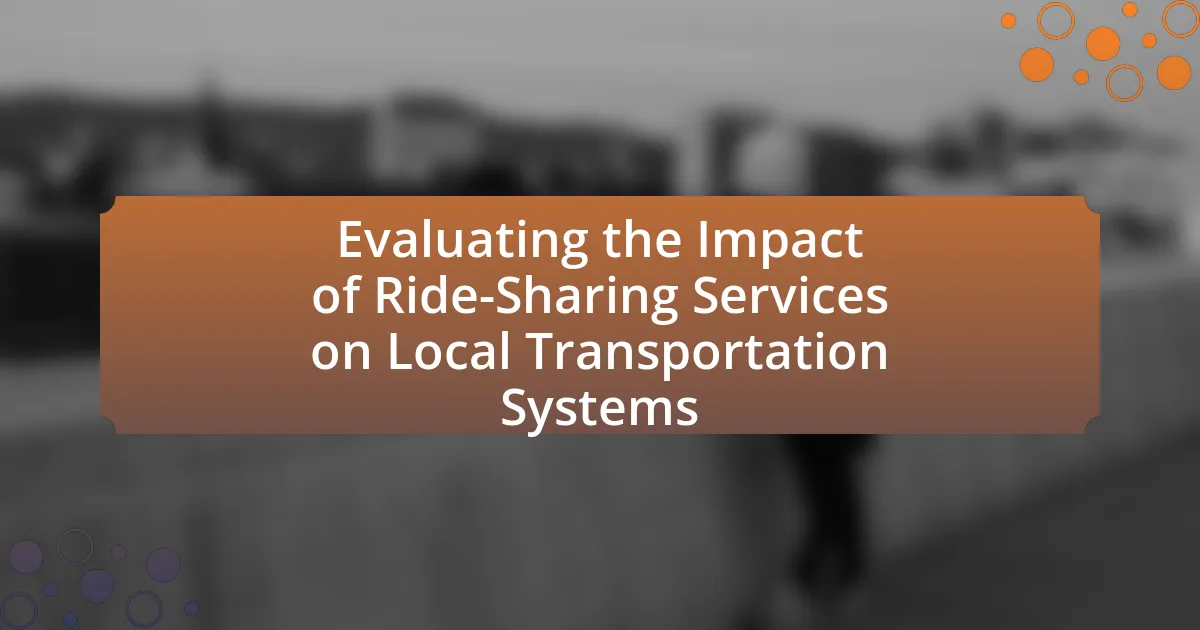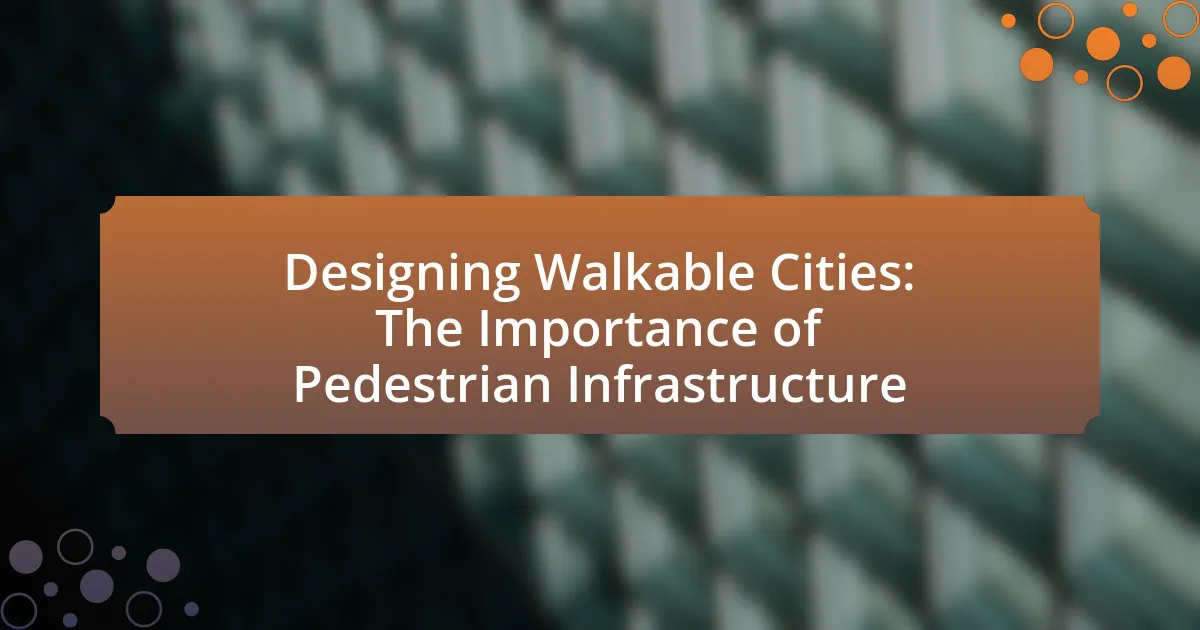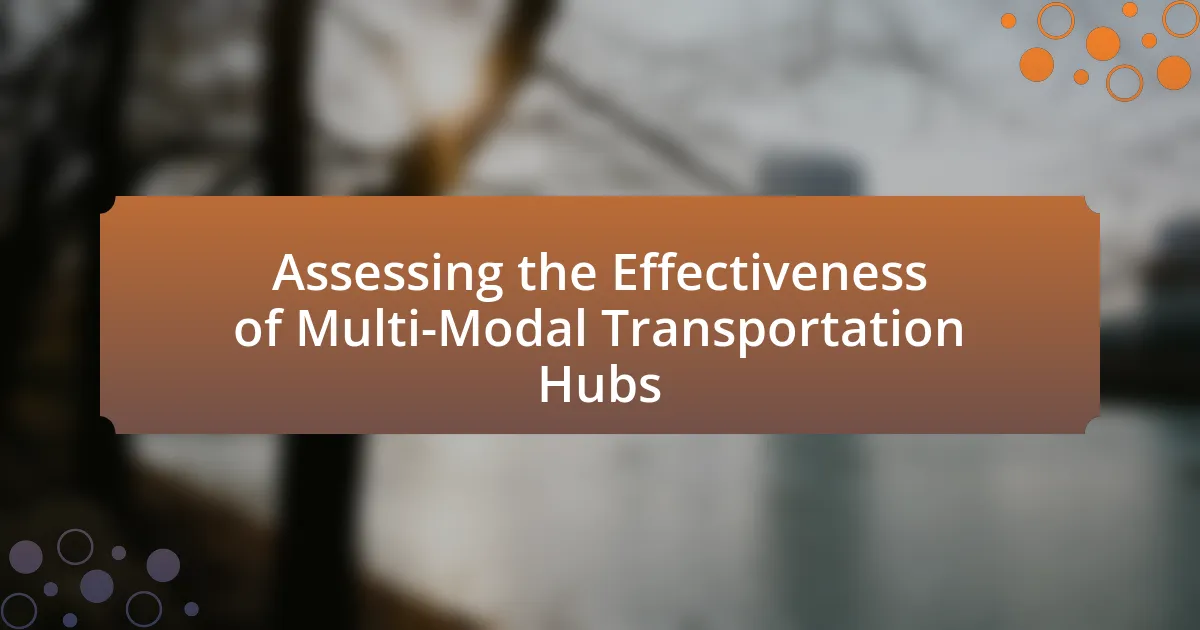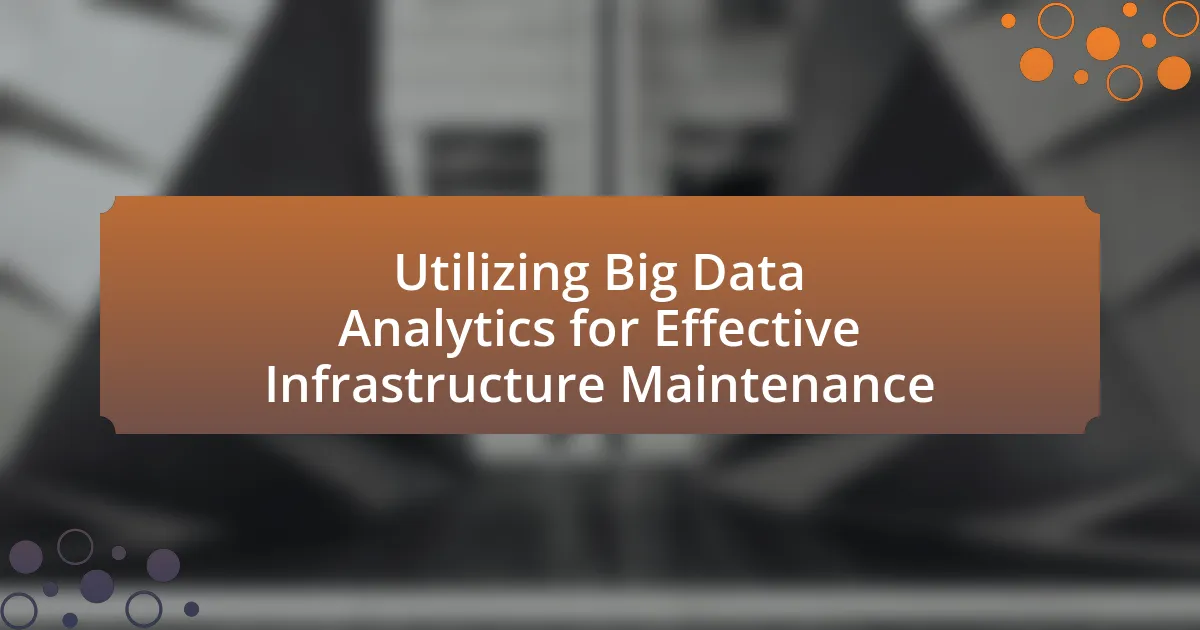Smart Traffic Management Solutions for Urban Areas are advanced systems designed to optimize traffic flow, reduce congestion, and enhance safety through the use of technology. These solutions leverage real-time data…
Integrating Bicycle Lanes into City Infrastructure: Best Practices
The article focuses on the integration of bicycle lanes into city infrastructure, emphasizing key considerations such as safety, connectivity, and community engagement. It outlines how dedicated bicycle lanes can enhance…
The Future of Freight: Planning for Last-Mile Delivery in Urban Areas
The article focuses on the critical aspect of last-mile delivery in urban areas, which represents the final step in the logistics process where goods are transported from distribution centers to…
Sustainable Transportation: Implementing Electric Bus Fleets in Cities
Sustainable transportation, particularly through the implementation of electric bus fleets, plays a crucial role in reducing greenhouse gas emissions, improving air quality, and enhancing public health in urban areas. This…
The Influence of Autonomous Vehicles on Local Infrastructure Planning
The article examines the significant influence of autonomous vehicles on local infrastructure planning, highlighting the necessary changes in road design, traffic management, and urban development. It defines autonomous vehicles as…
Community Engagement in Transportation Planning: Strategies and Benefits
Community engagement in transportation planning is a critical process that involves stakeholders such as residents, businesses, and community organizations in decision-making regarding transportation projects and policies. This article outlines the…
Evaluating the Impact of Ride-Sharing Services on Local Transportation Systems
Ride-sharing services, such as Uber and Lyft, play a significant role in local transportation systems by providing flexible, on-demand transportation options that complement traditional public transit. These services utilize mobile…
Designing Walkable Cities: The Importance of Pedestrian Infrastructure
Walkable cities are urban environments designed to prioritize pedestrian access and mobility, facilitating easy access to essential services and public spaces. This article explores the significance of walkable cities, highlighting…
Assessing the Effectiveness of Multi-Modal Transportation Hubs
Multi-Modal Transportation Hubs are integrated facilities that combine various transportation modes, such as buses, trains, bicycles, and pedestrian pathways, to enhance urban mobility and efficiency. This article assesses the effectiveness…
Utilizing Big Data Analytics for Effective Infrastructure Maintenance
Big Data Analytics plays a crucial role in enhancing infrastructure maintenance by enabling organizations to collect, process, and analyze extensive data generated by infrastructure systems. This approach facilitates predictive maintenance,…
